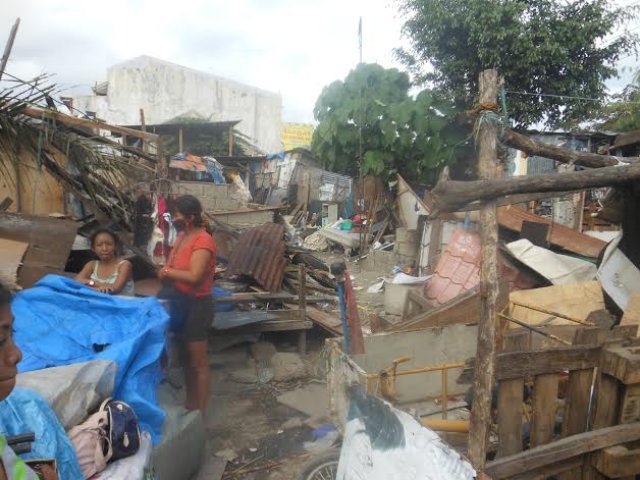
Residents in the urban poor settlement of San Dionisio in Barangay Cupang, Muntinlupa in Metro Manila, were woken on January 15 by a heavily armed police SWAT team.
Brandishing a local government order that referred to an address in a different barangay (neighbourhood), authorities overrode objections of residents and started tearing down their homes.
Community leader Liezel de Vera, vice-president of the San Dionisio branch of the socialist Party of the Labouring Masses (PLM), told Green Left Weekly that residents had been given no prior warning about their community's impending destruction. They had also been given no offers of relocation.
This, and the absence of a legitimate court order, made the demolition illegal, she said.
However, guarded by police armed with assault rifles, workers demolished the homes regardless. Drawn from the ranks of the urban poor themselves, but forced by the necessities of survival to carry out the shameful task, most of the workers demolishing the homes wore masks to obscure their faces.
De Vera said the destroyed homes had been “nice”. While informal settlements such as San Dionisio are slums, the ingenuity, hard work and culture of mutual aid and social solidarity of the Philippines' impoverished majority (known as bayanihan) means the interiors of their tiny, crowded dwellings are typically clean and surprisingly homely.
Looking at the piles of rubble where homes once stood, and hearing of the suddenness of the destruction, you could easily confuse what happened for one of the frequent climate change created natural disasters afflicting the Philippines, such as the rainstorms and landslides currently devastating Mindanao or Super Typhoon Yolanda that destroyed much of the Eastern Visayas in November.
The political forces behind the destruction of San Dionisio, and the constant destruction of urban poor communities in the Philippines, are in fact the same political forces that allow rich country-based corporations to continually raise global greenhouse gas emissions regardless of the growing destruction.
These are the forces of neoliberal globalisation.
Walking along the service road of the elevated South Luzon Expressway, off which San Dionisio lies, I was struck by a bewildering and depressing juxtaposition of functioning factories, closed and partially demolished factories, urban poor communities, demolished urban poor communities, upmarket shopping centres and malls, condominium apartment blocks and gated communities of garish “McMansions”.
During the later decades of the 20th century, Metro Manila's south was rapidly industrialised by multinational corporations chasing the lowest wages and greatest profits.
However, since the Asian financial crisis of 1998, the same factors have led to factories relocating, in some cases to the neighbouring provinces of Cavite and Laguna but more often to China, Cambodia and Bangladesh.
The workforce in the remaining factories has been largely contractualised. Workers are employed on contracts of a few months. After that, they must seek new jobs, which may be in the manufacturing industry, in the globalised service industries, such as call centres, or overseas. Labour is now the Philippines' biggest export commodity.
When they cannot find work locally or overseas, people use entrepreneurial ingenuity to eke out an improbable living in the informal retail, service and transport sectors.
As a result, urban poor communities sprung up on public land surrounding the factories.
However, a growing source of wealth for the Philippines' notoriously corrupt intertwined political and business dynasties, and their multinational corporate sponsors, is real estate. Metro Manila is a city of malls as well as slums.
Housing and retail development for the middle class and elite markets is not only being developed on the sites of closed factories, but on the public lands where the urban poor live. The multinational and local elites use their control of the Filipino state to illegally give the public lands to themselves.
In some cases, they meet the legal requirement to resettle the residents of the communities they destroy, although this is usually away from sources of livelihood. But often, as in the case of San Dionisio, this obligation is not even fulfilled.
No longer needed by industry, the urban poor are branded as surplus, their communities as eyesores, and they are supposed to simply disappear.
The residents of San Dionisio have other ideas. They have filed a case with the Human Rights Court against their illegal eviction despite being all too aware that state institutions are skewed against them.
In the meantime, they are defying the paramilitary police and remaining in the ruins of their homes. “We have nowhere else to go. Were staying right here,” De Vera said.
Photos below, of the community in the aftermath of demolitions, are by Tony Iltis
